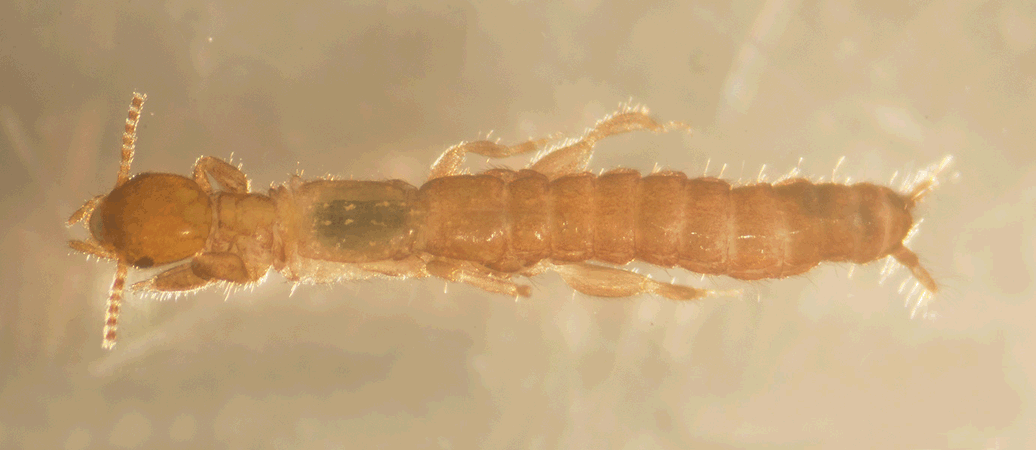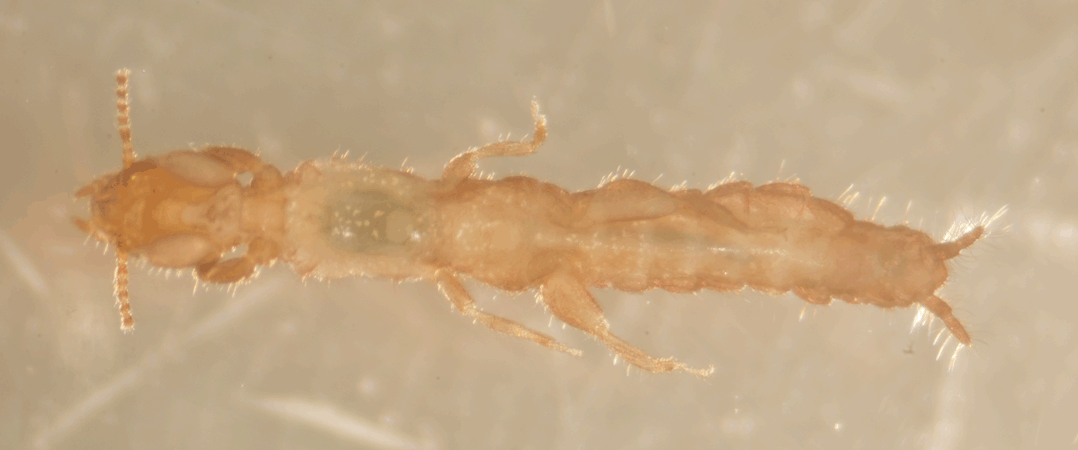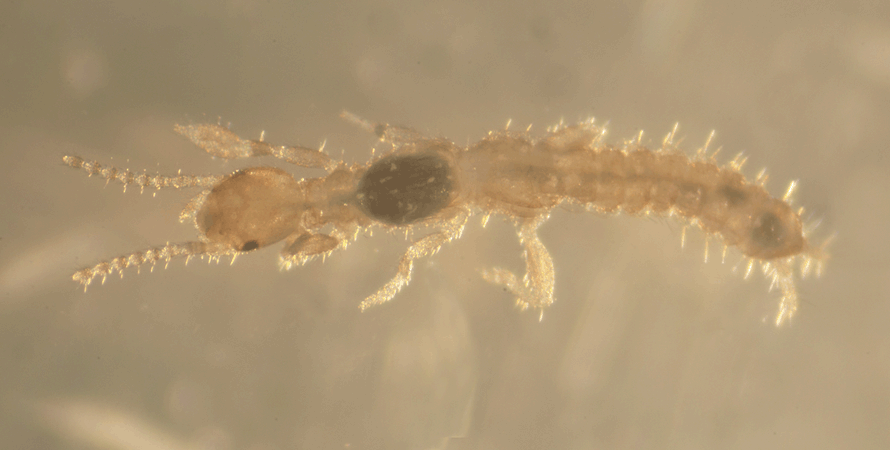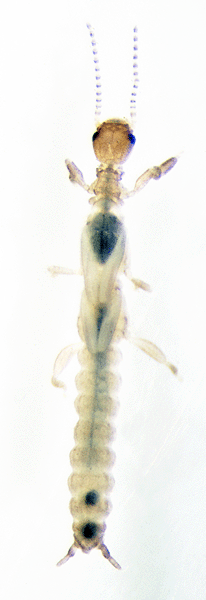Order Embiidina/Embioptera (Webspinners) in the Christopher B. Smith Preserve
Order Embiidina / Embioptera Characteristics: An online website by North Carolina State University reports there are only three families of webspinners in North America and 8 worldwide. This source reports 9 species in North America and ~200 worldwide. Another websource reports more that 360 species worldwide have been described, with estimates that there are about 2000 species in existence today. Found on every continent except Antarctica, with the highest density and diversity of species in the tropics and subtropical climates.
This small group of insects spin silk from structures on their front legs, creating web-like tunnels in which to live. Body shape is long, cylindrical in females, flattened in males, narrow, and flexible. Compound eyes are kidney-shaped. They lack ocelli; antennae are long with up to 32 segments. Legs are short. The first pair of legs has an enlarged last segment, which contains the silk-producing glands. Both adults and larvae can produce silk from their enlarged forelimbs. The galleries and tunnels woven from the silk help maintain moisture and offer protection from predators.
The abdomen has 10 segments with a pair of cerci on the final segment. Cerci are sensitive to touch. Females and nymphs are wingless; adult males can be winged or wingless, depending on the species. The head of a female has projecting mouthparts with chewing mandibles. Males use their mandible-like appendages to hold onto the female during copulation; males do not eat. Because morphology is so similar between species, identification is extremely difficult and is sometimes determined by the shape of the male genitalia.
After mating, a female will lay a single batch of eggs inside her silk gallery. Eggs hatch into nymphs that look like small wingless adults. After parental care (including in some species the mother guarding and feeding her offspring chewed-up leaf litter and other foods), the nymphs moult into several instars before emerging as full grown adults. Some females produce viable offspring without having fertilized eggs. Nymphs and adult females are herbivorous, feeding on leaf litter, moss, bark, and lichens. They extend their galleries into new food sources and the galleries continue to grow in size.
Interactions in the Smith Preserve: Embiopterans seldom produce large populations and probably play a minor role in food chains. As decomposers of leaf litter, they help recycle nutrients.
Family |
Species Name |
Common Name |
Unknown |
Unknown |
|
Unknown |
Unknown |
Unknown Species Webspinner
|
Unknown Species Webspinner
|
© Photographs and text by Susan Leach Snyder (Conservancy of Southwest Florida Volunteer), unless otherwise credited above.






